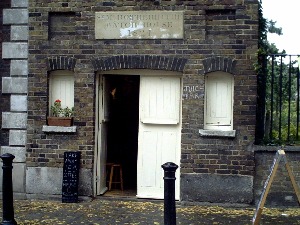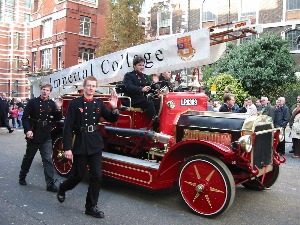
FIRE!
|
|
| london-footprints.co.uk |
Fires have brought enormous changes to London. In AD 61 Boudicca and her tribesmen destroyed the Roman city of Londinium by burning, evidenced by a layer of burnt material in the ground.
THE GREAT FIRE |
|
 |
ENGINE HOUSES Note: the photo shows the Rotherhithe Watch House but the engine house is a matching building |
| THE FIRE BRIGADE After the Great Fire many householders paid fire insurance. The company's metal badge was fixed onto the house and firemen employed by each company would attempt to save the building (no regard was paid to people!). Gradually these fire-fighters began to co-operate and in 1833 they formed the London Fire Engine Establishment with James Braidwood as Superintendant. Braidwood was killed in the great Tooley Street fire of 1861 when a wall collapsed. There is a memorial plaque near the spot. Braidwood was succeeded by Captain Eyre Massey Shaw who became Commander of the new Metropolitan Fire Brigade in 1865. He was to resign after the LCC took control in 1889. In 1904 it became known as the London Fire Brigade and now has its HQ at Lambeth. The buildings it previously occupied in Southwark Bridge Road house a museum. This is open for guided tours which must be booked. Telephone 020 7587 2894 or see their website for details. A collection of photos is available online. |
 |
|
|
london-footprints.co.uk 2007
[articles list] [places to visit]